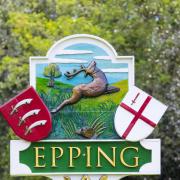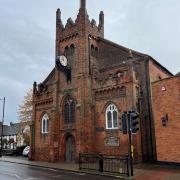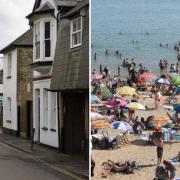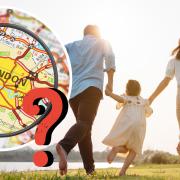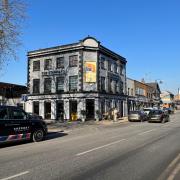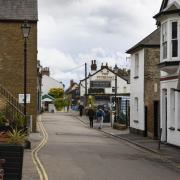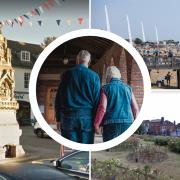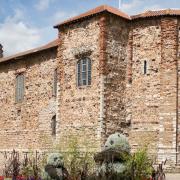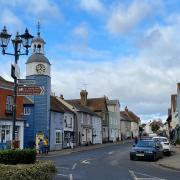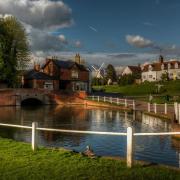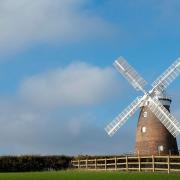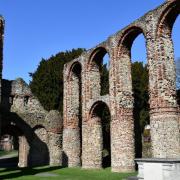Living with the seais at the heart of Canvey Island’s heritage and this historic connection to the sea has certainly left its mark on the island in more ways than one, as Petra Hornsby discovers

Anyone living near the coast will tell you of the challenges caused by water and the weather, but being positioned well below sea level has certainly given residents of Canvey Island more than their fair share of trials.
Up until the early 17th century, the island was inhabited by a very small population of sheep farmers who also harvested salt and produced wheat grain. However, flooding was a continual problem and their rudimentary efforts to build sea defences were less than satisfactory as quite often livestock would simply be washed away. The arrival of ? around 200 Dutch immigrants, fleeing their homeland, was the beginning of a promising new start for Canvey when a deal was made between a local landowner and Cornelius Vermuyden, a water engineer, to oversee the maintenance of the sea walls.
The Dutch certainly left their mark and two very typical Dutch cottages remain on the island — one is now residential and one serves as a museum. To this day, Canvey enjoys close links with the Dutch town of Ouwerkerk, home to the Watersnood museum, as both towns share history of the Great Flood of 1953. The flood dramatically hit the east coast of England in 1953, causing the evacuation of the island and a death toll of 58, but essentially triggered the investment in essential work to raise the 14 miles of sea walls.
The population was a modest 300 at the start of the 20th century but, as the island was being enthusiastically marketed as an ideal holiday location for Londoners, this would soon change.
An ambitious, Fulham-born developer called Frederick Hester had plans to entice visitors to the island by building the Winter Gardens — a six-mile-long complex of glass houses containing exotic plants, fishponds and decorative fountains. He also auctioned off plots of land for the purpose of building holiday lets, although some plots were for permanent homes. A tramway and a pier were also in development until an unusually high spring tide in 1904 caused significant flood damage which had a negative effect on investors and, in turn, forced Hester to abandon his projects.
By the start of World War I, Canvey’s population had grown to 1,795, thanks in part to a new bus service and to a road bridge connecting Canvey to the mainland town of Benfleet.
Canvey Island is now home to well over 40,000 people and one resident, Joan Liddiard, who was born and raised on the island, has seen many changes over the decades. She is passionate about Canvey and is chair of the Canvey Island Community Archive, a group dedicated to detailing the long history of the island.
Her research for the archive has revealed how difficult it once was to access the island. She explains: ‘Before the first bridge was built, the island was only accessible during low tide via stepping stones, but people mostly came and went by boat. My grandparents came to the island from Walthamstow in 1922. My grandfather opened a greengrocer’s ? shop and all goods for the shop were transported in by boat — as were all things back then.’
Joan is not too sure why her grandparents moved to the island in the first place as, by all accounts, they left a very comfortable way of life back in London to live in little more than a shack with their four children.
‘Perhaps, like others, they wanted to be part of the regeneration of the island and share the vision that Frederick Hester had held a decade earlier,’ Joan ponders. ‘People started to buy plots of land; they certainly weren’t big and the houses that were built were used more often than not as holiday accommodation. Even in places that were permanently occupied, people would take the opportunity to cater for the increasing numbers of holidaymakers from London by opening up tearooms in their front rooms.
‘During the Blitz, people escaped to Canvey and then tended to stay. Canvey Island seemed to become an overspill of London’s East End and that is probably what helps make it the community it is today — close and friendly.’
Joan reflects on the changes that have taken place over the years. ‘These days, Canvey isn’t so much a place for holidays as such, but people do come for the day to visit the beach and have a picnic. It is still rated for that and you will see grandparents with their children on the beach, perhaps remembering something of the Canvey of yesteryear.’
Canvey Island has certainly had quite a history of perilous tides that have tested the residents’ way of life, but do Joan and her fellow residents live at ease now with the sea that surrounds them?
‘We now have two bridges that connect us to the mainland, making it easy to come and go. In terms of sea defences, we now feel safe, despite being surrounded by water and being below sea level. We recently unveiled a mural marking the 60th anniversary of the Great Flood of 1953, during which we lost so many lives. Of course, the island will never forget that.’




